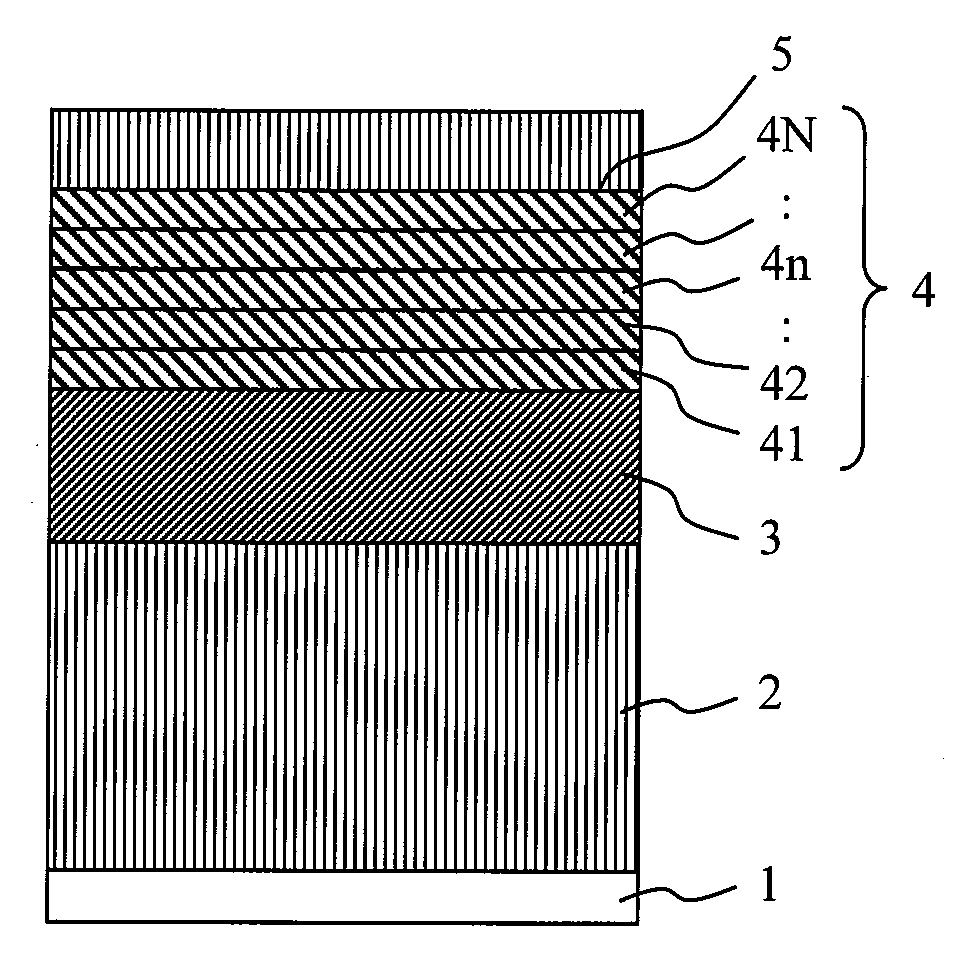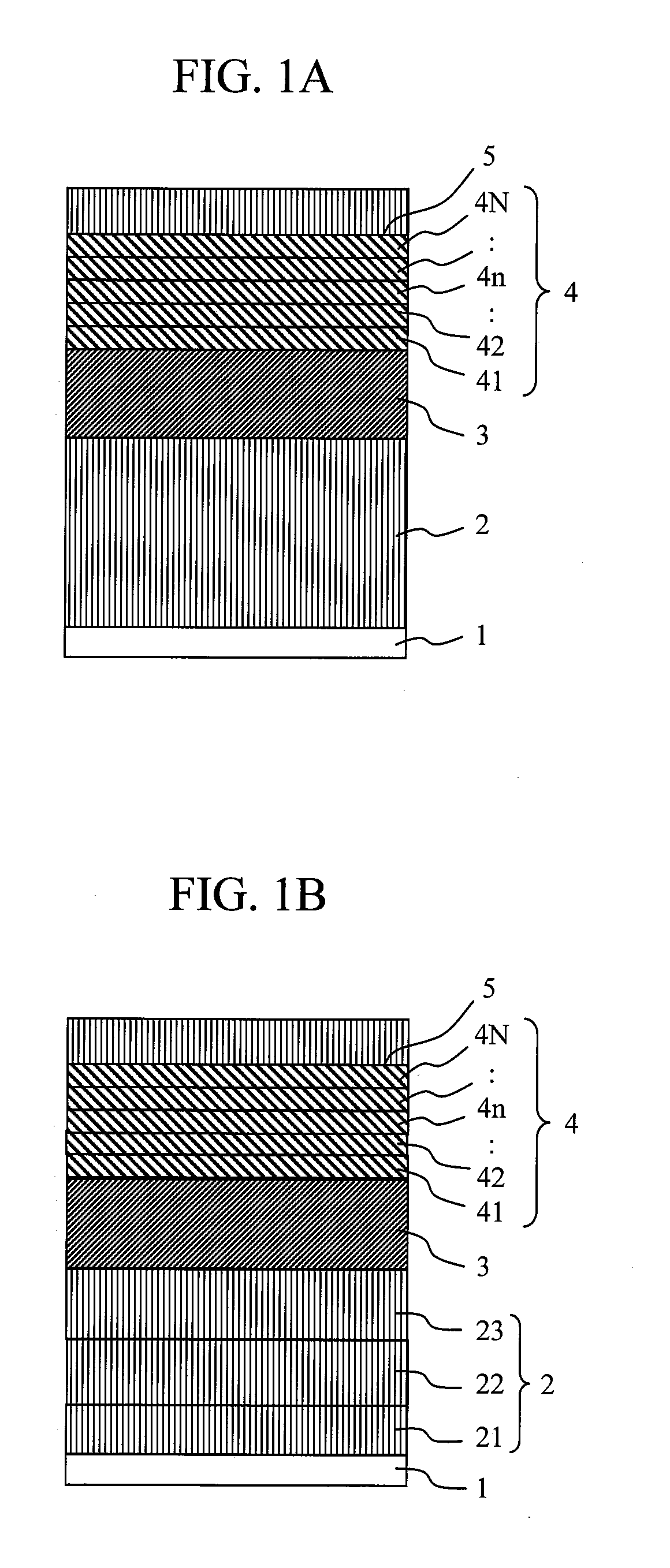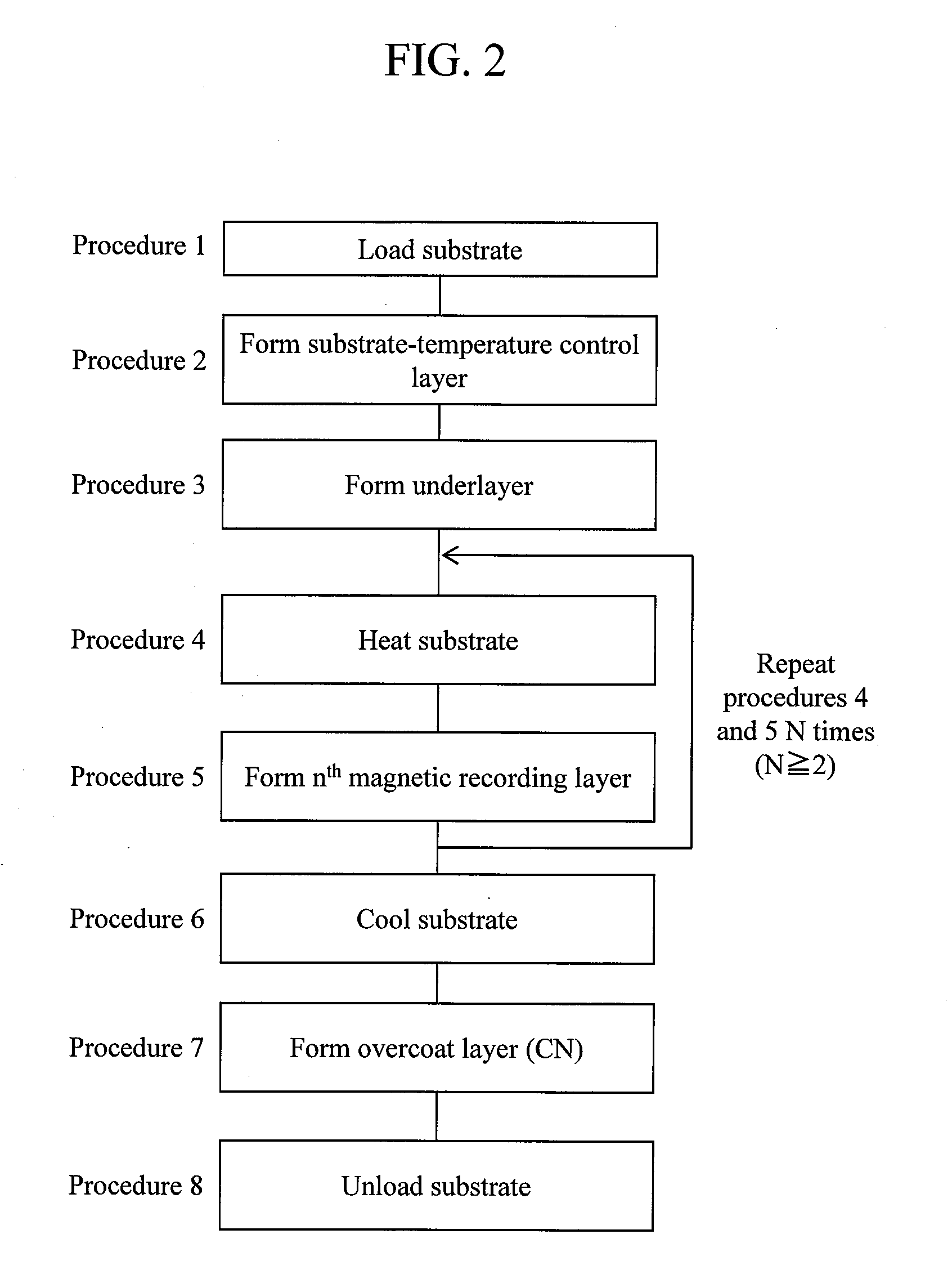Perpendicular magnetic recording medium and manufacturing method of the same
- Summary
- Abstract
- Description
- Claims
- Application Information
AI Technical Summary
Benefits of technology
Problems solved by technology
Method used
Image
Examples
embodiment 1
[0042]A perpendicular magnetic recording medium the schematic sectional view of which is shown in FIG. 1A is produced. The perpendicular magnetic recording medium of the present embodiment is produced by using a Canon Anelva C-3010 in-line disk sputtering system. The present system is constituted by a plurality of process chambers for deposition, chambers exclusively for heating, and substrate load / unload chambers, and the respective chambers are independently evacuated. Before the perpendicular magnetic recording medium of the present embodiment is produced, all the chambers are evacuated to a degree of vacuum of 8×10−6 Pa or less. The processes are sequentially carried out by moving the carrier loaded with the substrate to the respective process chambers. Further, heating of the substrate is performed in the chamber exclusively for heating, and is performed from both sides of the substrate by using a PBN (Pyrolytic boron nitride) heater. The temperature rise rate of the heater is ...
embodiment 2
[0054]A perpendicular magnetic recording medium of the present embodiment is produced with the same film configuration and film conditions as in embodiment 1 except for the magnetic recording layer. In the present embodiment, the magnetic recording layer 4 is produced by 4-step deposition (N=4 in the deposition method shown in FIG. 2), the compositions of the first to the fourth magnetic recording layers are changed. Each of the thicknesses of the first to the fourth magnetic recording layers is 1.5 nm. Further, the samples are all produced with the condition of the heating temperature in the heat process chamber of 500° C., and the heating time is one minute.
[0055]Table 2 shows the result of evaluating the composition, the ordering parameter, the crystal grain size and the (001) texture quality of each of the magnetic recording layers of the produced samples. In Table 2, for example, when (45 at. % Fe-45 at. % Pt-10 at. % Ag)-30 at. % C (22 vol. % C) is described, the description m...
embodiment 3
[0058]A perpendicular magnetic recording medium of the present embodiment is produced with the same film configuration and deposition conditions as samples 2-3 and 2-4 of embodiment 2 except for the film thickness of the first magnetic recording layer.
[0059]Sample series 3-1 of the present embodiment is a sample series in which the film thickness of the first magnetic recording layer of sample 2-3 of embodiment 2 is changed. Further, sample series 3-2 of the present embodiment is a sample series in which the film thickness of the first magnetic recording layer of sample 2-4 of embodiment 2 is changed. The X-ray diffraction of the produced sample series is measured, and the integrated intensity ratio I(110) / I(001) of an FePt (001) diffraction peak and an FePt (111) diffraction peak is evaluated. Further, measurement of the crystal grain size is performed by using a TEM. The respective results are shown in FIGS. 5A and 5B.
[0060]It is found out that when the film thickness of the first...
PUM
 Login to View More
Login to View More Abstract
Description
Claims
Application Information
 Login to View More
Login to View More - R&D
- Intellectual Property
- Life Sciences
- Materials
- Tech Scout
- Unparalleled Data Quality
- Higher Quality Content
- 60% Fewer Hallucinations
Browse by: Latest US Patents, China's latest patents, Technical Efficacy Thesaurus, Application Domain, Technology Topic, Popular Technical Reports.
© 2025 PatSnap. All rights reserved.Legal|Privacy policy|Modern Slavery Act Transparency Statement|Sitemap|About US| Contact US: help@patsnap.com



